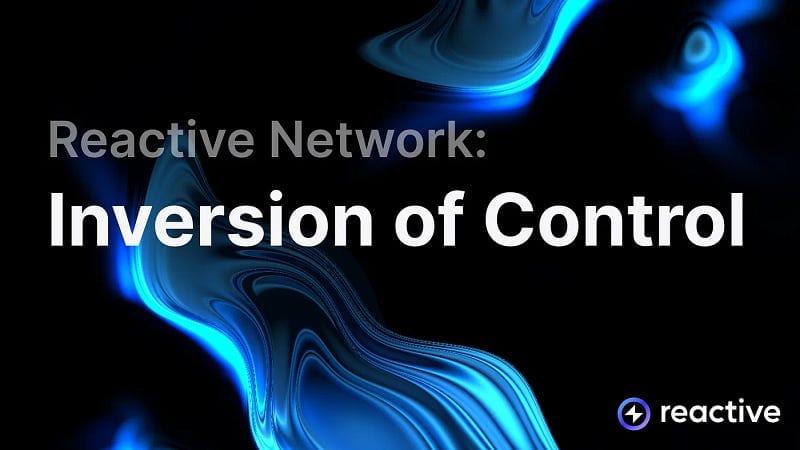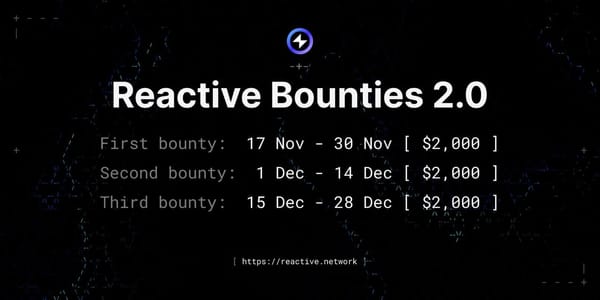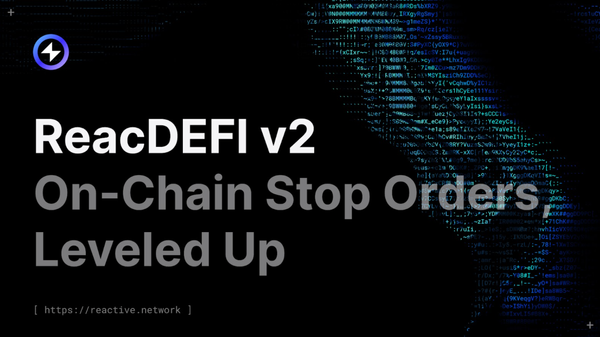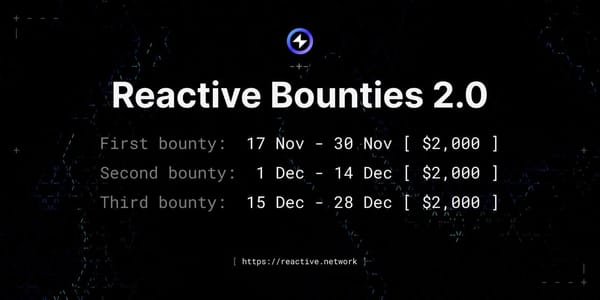Reactive Network: The Inversion of Control
Let’s delve into the core of the Reactive Network, and particularly, its foundational principle of inversion of control, a concept set to…

Let’s delve into the core of the Reactive Network, and particularly, its foundational principle of inversion of control, a concept set to redefine the essence of smart contract functionality.
In the evolving narrative of blockchain technology, the Reactive Network emerges as a cornerstone, challenging the conventional paradigms of smart contract functionality.
Central to this innovation is the principle of inversion of control (IoC), a concept that fundamentally alters the operational dynamics of smart contracts, transitioning them from passive to proactive entities within the blockchain ecosystem.
The Technical Intricacies of Inversion of Control
Inversion of Control (IoC) is a design principle in software engineering where the flow of control is reversed compared to traditional procedural programming. In the context of the Reactive Network, IoC is applied to smart contracts, transforming them into Reactive Smart Contracts (RSCs) that possess the autonomy to act based on internal logic and external blockchain events.
Traditionally, smart contracts on blockchain platforms like Ethereum are executed in response to transactions or calls made by external actors. These contracts execute a predetermined set of operations when invoked, lacking the ability to initiate actions based on real-time blockchain events or states.
The Reactive Network, through IoC, inverts this model by enabling RSCs to ‘subscribe’ to specific blockchain events. These events could range from simple transactions to complex state changes across various contracts or blockchains.
Upon detecting an event of interest, an RSC autonomously triggers its embedded logic, effectively allowing the contract to ‘react’ to changes in the blockchain environment without external invocation.
RSCs are engineered with advanced event-listening capabilities, enabling them to monitor a wide array of blockchain activities. This is achieved through a combination of event signatures and state monitoring mechanisms that keep RSCs attuned to the pulse of the blockchain.
For instance, an RSC could be programmed to monitor liquidity pool events in a decentralized exchange (DEX) and automatically execute rebalancing actions when certain liquidity thresholds are met. This proactive behavior is facilitated by the RSC’s ability to interpret event data, process it against its logic, and execute relevant operations — all autonomously and in real-time.
The Relayer Network: Facilitating Cross-Chain Reactivity
The Reactive Network’s ability to span across multiple blockchains is powered by the Relayer Network. This sophisticated infrastructure acts as the nervous system of the Reactive Network, transmitting event data between blockchains and RSCs.
This cross-chain communication capability ensures that an event on one blockchain can trigger a responsive action in an RSC on a different blockchain, thus achieving a level of interoperability and integration previously unattainable with traditional smart contracts.
Exciting Use Cases
Reactive’s capabilities combined with the Relayer Network helps existing Web3 projects to enhance their capabilities in ways they may not have been able to imagine before. Leveraging our own expertise as well as those of our customers, we believe that at a minimum, the following areas can be dramatically improved based on what our new solution can do:
- Improvements in DEX lending and borrowing — using Reactive Smart Contracts, changes in liquidity pool states can be tracked on-chain. This tracking would act like a built-in arbitrage bot, thereby helping liquidity providers reduce/eliminate concerns of impermanent loss.
- More efficient and cheaper tracking of price volatility across oracles — instead of regularly sourcing information from oracles to track price volatilities, Reactive Smart Contracts can be established to listen for certain events/indicators. Instead of regularly calling (and paying) for information from various oracles, RSCs can instead act automatically once certain parameters are triggered
- Automations in Web3 gaming & dynamic NFTs — Web3 gaming applications which reward their players as they advance through gameplay can utilize Reactive Smart Contracts as various milestones are reached. RSCs could recognize players who level up, and react accordingly by issuing a corresponding NFT to acknowledge the accomplishment, or by evolving an existing NFT to reward the player.
- Supply chain, logistics, and third-party interactions — In the physical world, the movement of goods tracked through blockchains could leverage RSCs to improve liability management and final payment settlement. As the liability of a good moves from one supplier to another, RSCs can be used to react accordingly to the payment for services provided by each supplier.
___
The technical foundation of the Reactive Network and its inversion of control principle heralds a transformative era for blockchain applications. By equipping smart contracts with the ability to autonomously respond to dynamic blockchain events, the Reactive Network opens up a landscape of possibilities for more interactive, responsive, and complex decentralized applications.
Join us as we delve deeper into the applications and implications of this groundbreaking technology in our upcoming installments. Together, let’s pave the way for a new generation of blockchain technology, one reactive smart contract at a time.





